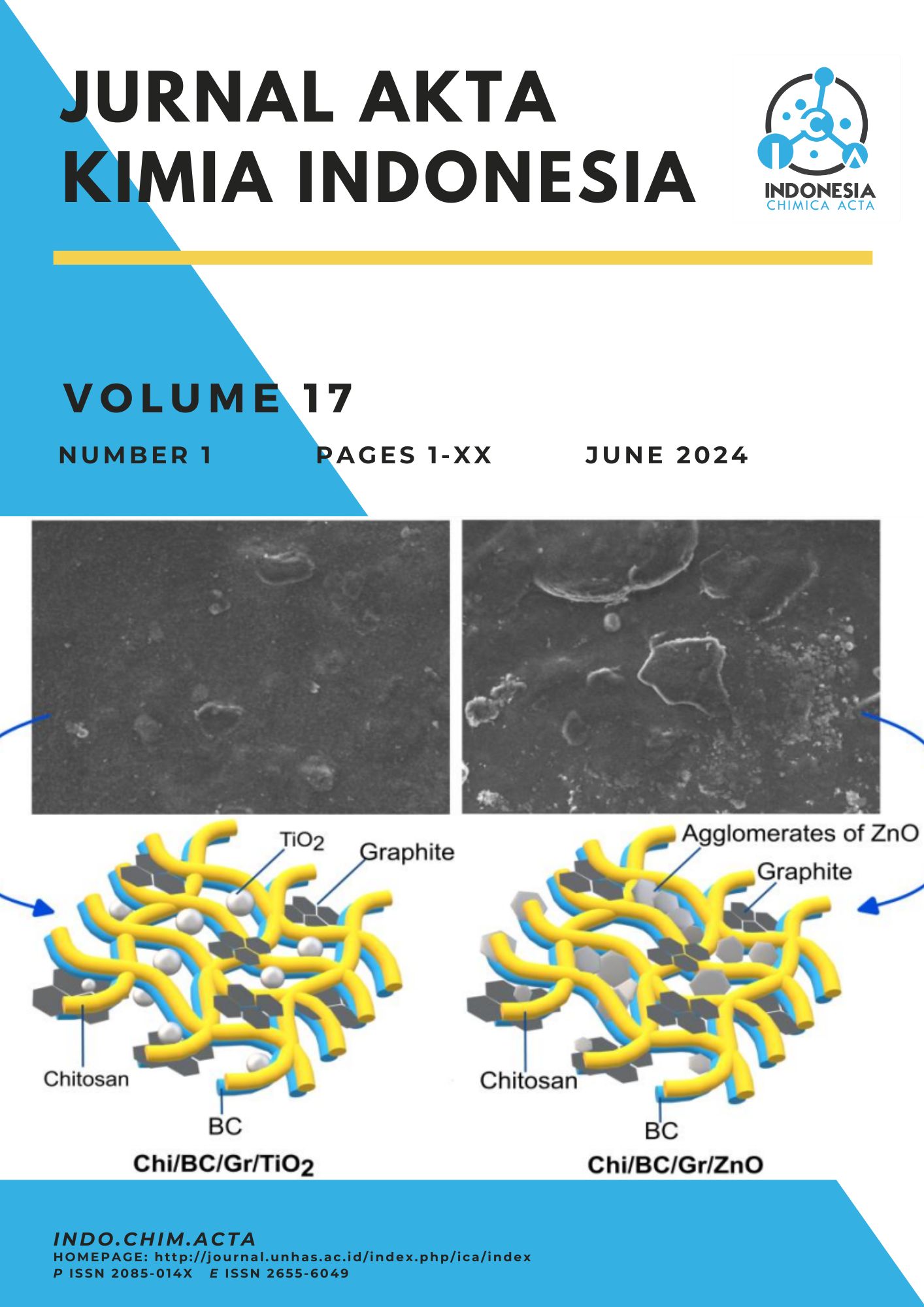Synthesis of Smart Packaging Based on Chitosan-PVA/Binahong Extract as an Antibacterial Plastic
Abstract
Chitosan-PVA composite with the addition of binahong extract is a bioplastic that is being developed aims to make eco-friendly product and contain antibacterial agents. This bioplastic is useful as packaging to maintain the freshness quality of food. The purpose of this research is to study and develop smart packaging with the addition of binahong leaf extract as an antibacterial agent. The manufacture of plastic in this study was carried out by varying the addition of binahong leaf extract ranging from 60-100%. The characteristics of the chitosan-PVA plastic were tested through FTIR, water uptake, and antibacterial tests. Chitosan-PVA plastic with the addition of 100% concentration of binahong extract had a good bacterial inhibition of 12 mm. The resulting chitosan-PVA plastic with binahong extract showed the presence of chemical bonds between the chitosan, PVA and flavonoid groups. The bioplastics produced have quite a large water uptake compared to non-biodegradable commercial packaging, reaching 491.52% with the addition of 90% binahong extract with the best antibacterial capabilities in the packaging with the addition of 100% binahong extract.
Full text article
Authors
Copyright (c) 2024 Neny M Aras, Mega Fia Lestari

This work is licensed under a Creative Commons Attribution-ShareAlike 4.0 International License.
This is an open access journal which means that all contents is freely available without charge to the user or his/her institution. Users are allowed to read, download, copy, distribute, print, search, or link to the full texts of the articles in this journal without asking prior permission from the publisher or the author.
Jurnal Akta Kimia Indonesia (Indonesia Chimica Acta) operates a CC BY-SA 4.0 © license for journal papers. Copyright remains with the author, but Jurnal Akta Kimia Indonesia (Indonesia Chimica Acta) is licensed to publish the paper, and the author agrees to make the article available with the CC BY-SA 4.0 license. Reproduction as another journal article in whole or in part would be plagiarism. Jurnal Akta Kimia Indonesia (Indonesia Chimica Acta) reserves all rights except those granted in this copyright notice.

